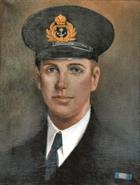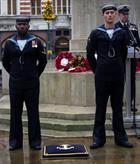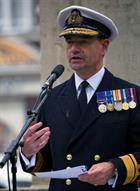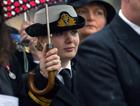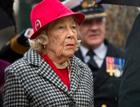CENTENARY OF ROYAL NAVAL AIR SERVICE VICTORIA CROSS HERO
Today’s Centenary of Royal Naval Air Service Victoria Cross hero, Flight Lieutenant Richard Bell-Davies is being marked by the laying of a memorial stone in Sloane Square London. Richard Bell-Davies was awarded the Victoria Cross on 19 November 1915 for his conspicuous bravery rescuing a fellow pilot under fire.
The Royal Naval Air Service fought with great distinction and valour on all fronts during the First World War and Bell-Davies, flying an early single seat biplane, was taking part in a bombing raid on a Bulgarian railway station when a fellow pilot, Smylie, was shot down. Bulgarian troops were moving in to capture him, so Bell-Davies landed and picked Smylie up. Smylie squeezed into the fuselage between the engine and the cockpit and the laden aircraft took off just as the Bulgarians opened fire. It was the nation’s first combat Search and Rescue mission.
Speaking at the ceremony, Rear Admiral Graeme Mackay, Director Carrier Strike said “The selfless act of bravery by Bell-Davies in rescuing a fellow downed pilot behind enemy lines and in sight of the advancing enemy is an inspiration to all in the Fleet Air Arm and Naval Service.”
“Earlier in the same year, Richard Bell-Davies’ heroism making repeated strikes against submarines in Zeebrugge, had already led to the award of the DSO. Mentioned in Dispatches after the Gallipoli Campaign and awarded the AFC and the Croix de Guerre with Palm, his WW1 service embodied the sheer courage, commitment and determination of the Royal Naval Air Service, blended with selfless loyalty for his fellow naval aviators. From 1917 Bell-Davies was involved in the development of aircraft carriers and in 1918 he carried out the first true carrier landing.”
Richard Bell-Davies’ Great Granddaughter, Emma Wightman said “my Great Grandfather was typical of the pioneering spirit of the early naval aviators. He was inventive and innovative, always experimenting, breaking new ground, a ‘bit whacky’, gentle, kind and genuinely modest. He flew his planes with all sorts of home-made improvisations, from using Sandow elastic to fix a wing, periscopes for navigation or a length of wool for checking wind direction.”
Bell Davies went on to become a Vice Admiral and in the interwar years continued to guide the development of naval flying. During World War II he was captain of the escort carrier HMS Dasher and the trials carrier HMS Pretoria Castle.
“Vice Admiral Richard Bell-Davies VC CB DSO AFC laid the foundations for carrier aviation which continues today with the introduction of the Queen Elizabeth Class aircraft carriers into service,” continued Rear Admiral Graeme Mackay. “That is why Bell-Davies is such an inspiration and a guiding hand on the shoulder of naval aviators today, especially on a dark night landing on, and taking off, a pitching deck.”
“The new carrier, HMS Queen Elizabeth will mark the continuation of our proud naval aviation heritage and tradition for which Admiral Bell-Davies laid the foundations. We are very proud to honour his memory today with this very fine stone here in the nation’s capital in perpetuity.”
Vice Admiral Bell-Davies’ ceremony today is part of a nationwide campaign to honour Victoria Cross recipients from the First World War by laying commemorative paving stones in their birthplace on the Centenary of their awards. A total of 628 Victoria Crosses were awarded during the First World War, including two to the Royal Naval Air Service.

